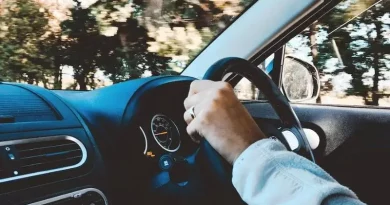What Happens if More Than One Person Is at Fault in Car Accident?
Multiple drivers can be at fault in multi-car crashes. The fault is determined by pre-crash details and each driver’s actions. For instance, a crash involving a driver who fell asleep and a driver with a broken headlight could result in shared liability.
If you are involved in a crash with multiple cars, the guidance of an attorney is necessary to determine liability and enforce accountability. Without a lawyer, your chances of an unfavorable legal or insurance-related outcome rise. Click here to learn more about car accident law and consult with experienced attorneys in your community right away.
How is “Multiple Car Accident” Defined?
Multiple-car accidents are defined as crashes involving more than one motor vehicle. It does not matter if it is a car, truck, motorcycle, or a combination of vehicles.
Managing Injury and Medical Protocol
In crashes involving multiple cars, where drivers or passengers have been injured, medical assistance is the top priority. Emergency personnel are brought onto the scene to assist the wounded, often following protocol where treatment is administered before exiting vehicles or leaving the site. Their presence helps mitigate the potential for fatalities or further injury,
Ambulances play an important role in crashes where an injury occurs. Once a clear scene is established, an uninjured person at the crash site should call for ambulance support. Upon arrival, determine what evidence is necessary for a claim and take note accordingly.
When Multiple At-Fault Drivers Crash Into You
When you sustain injury due to multiple at-fault drivers (a common occurrence in these crashes), a case review by your lawyer can result in the exact percentage of liability each party should account for towards what you are owed. If this is the case, you may recover compensation from multiple insurance carriers.
Fault and Multi-Car Accidents
Most multi-car crashes begin with someone being rear-ended. This is also called a multi-car pileup or a chain reaction crash because multiple rear-ended cars seem linked together at the impact points.
The First Car to Rear End Another is Typically At Fault
The number of cars involved does not sway the principle that the first car to rear-end another is usually at fault. This is where the crash begins, and this is the driver with the best opportunity to prevent the crash from happening through factors such as evasive maneuvering, distance, and speed.
The logic is that a line of four cars successfully stopped and idling one after another is evidence that the fifth car had just as much opportunity to do the same. Thus, in such a five-car pileup, the fifth car would be at fault.
Observing the Scene
Whenever possible, on the scene of a crash, write down the details of the event, and take photos or video. These can be used to discover key pieces of evidence that may strengthen your position and could help protect you from speculative circumstances that could be used against you.
Comparative Fault Policies
Some insurance investigations will conclude that crashes have multiple comparatively negligent drivers. For example, in a four-car pileup, car #1 stops and is rear-ended by car two, then car three stops successfully but is rear-ended by car four, pushing car #3 into car two. This makes both car #2 and car #4 at fault.
Chain Reactions with Multiple At-Fault Drivers
Some chain reaction crashes involve multiple at-fault drivers. This is governed by the principle called “comparative negligence.” Its name references the need to compare each driver’s actions and assess the percentage of responsibility. Comparative negligence is determined using information and clues collected at the scene of the crash. This information is analyzed by lawyers and adjusters.
Evaluating On-site Evidence
Multi-car crashes provide multiple streams of evidence for lawyers to consider and examine. This includes photos, weather, defects in cars, and other relevant information. Incident occurrences that happen away from cameras may take longer to assess but are still considered. This helps determine who is responsible and the appropriate following proceedings.
When Passengers Seek to Hold Drivers Liable
Yes, passengers can seek liability claims against drivers and even third-party drivers. This is a normal occurrence, and if not prepared for, it can add more tension to an already tense situation. Securing the correct legal counsel helps increase the chances of a streamlined process.
Navigating Resistance from Insurance Companies
At-Fault States
States that hold drivers responsible for the damages they have been found to have caused during a collision are known as “at-fault states.” Not every state is an at-fault State.
Multiple Insurers Can Dispute Fault
There are multiple reasons why determining whose insurance will cover the cost can be challenging. Insurance companies want to avoid paying out at all costs. Claims can be delayed, denied, and otherwise disputed by companies seeking to gain the upper hand in litigation. Having a lawyer for these scenarios is especially helpful in achieving a favorable outcome.
Fault Designation
Juries are sometimes tasked with assigning fault to the parties involved in multi-car crashes. Some defendants may seek to hold the plaintiff responsible. This can cause juries to review the case and reach a judgment, which could result in executing an adjustment of liability.
In cases where the agency of the State is factored into payouts, the state may require less than 50 percent fault.
Reaching a Factual Conclusion in Multi-Car Accidents
All parties involved in multi-car crashes rarely offer matching accounts of what happened and how it started. Accounts of what happened usually differ, and with more drivers involved, the variance of stories will increase.
Careful examination of physical evidence and accounts of witnesses make up the bulk of what happens after these events happen before liability is assigned. Attention to detail reveals the factors that tell the story of who will be held liable, to what extent, and why.




